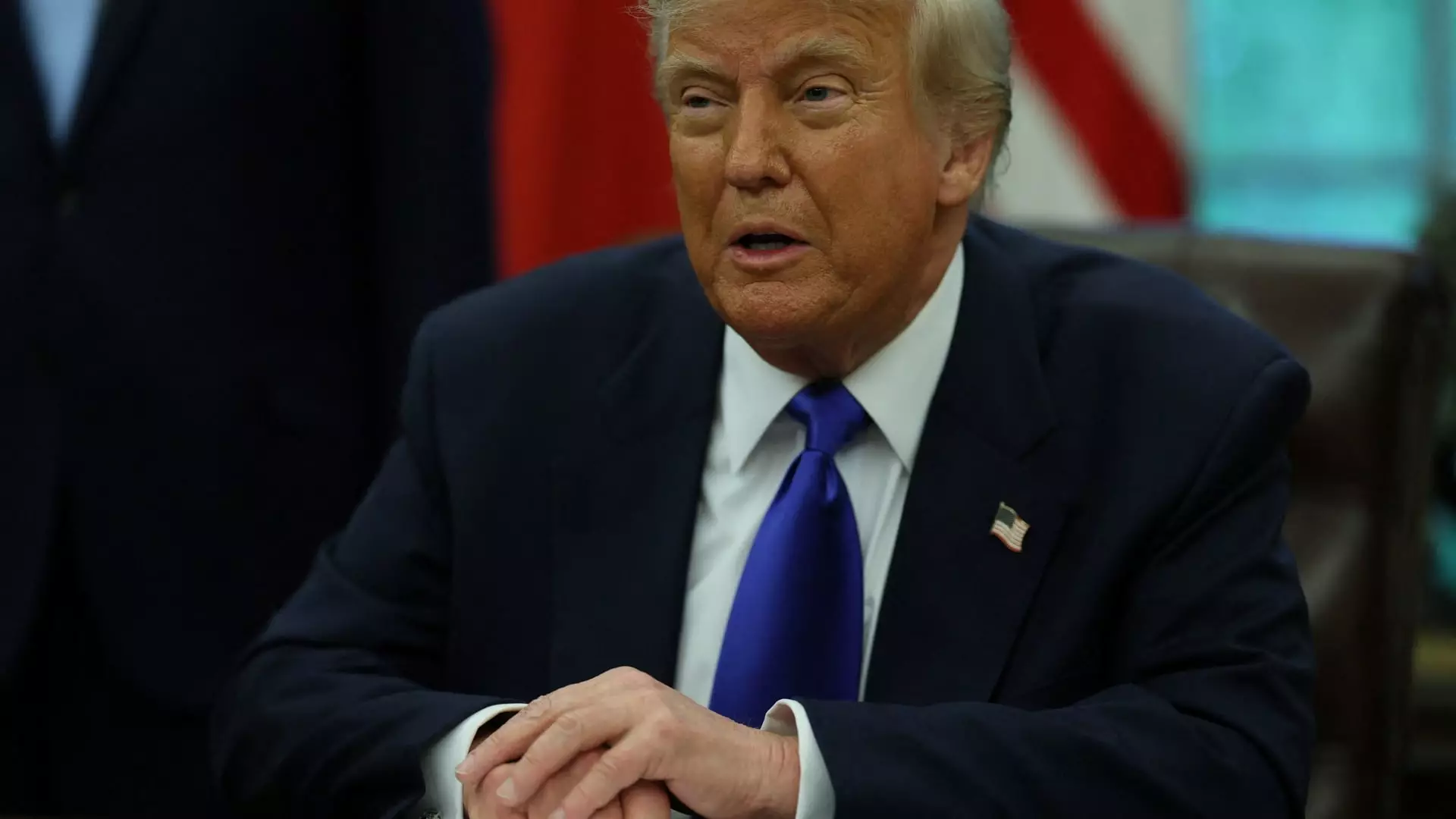In a bold move that echoes his administration’s persistent theme of “America First,” President Donald Trump recently signed an executive order aimed at bolstering domestic pharmaceutical production. The initiative is rooted in a series of sweeping reforms intended to liberalize the pathways for American drug manufacturers while imposing stricter regulations on foreign competitors. While this strategy is lauded by many as a necessary step towards restoring American independence in pharmaceutical production, a deeper analysis raises several critical concerns regarding its implications on the industry and American citizens.
Streamlining Under Pressure: The Flaws of Quick Fixes
Trump’s order seeks to reduce the lengthy approval process for new domestic manufacturing facilities, which currently spans a daunting five to ten years. The belief is that by drastically trimming this timeline through administrative streamlining and reduced inspections, pharmaceutical companies will be incentivized to bring production back to American soil. However, history has shown that hastily implemented policies often yield unintended consequences, particularly in highly regulated industries like pharmaceuticals. The push for rapid changes runs the risk of bypassing essential safety protocols and rigorous evaluations, potentially compromising the quality of medications involved.
Moreover, while the intention to promote manufacturing is sound, it risks complicating the FDA’s relationship with companies. Increased inspections and a focus on domestic manufacturing can create an adversarial atmosphere between the industry and regulators. This tension may stifle innovation and lead companies to divert their research efforts overseas, where compliance frameworks are less daunting.
The National Security Argument: A False Dichotomy?
Trump’s rationale for this initiative hinges significantly on national security, warning against reliance on foreign countries for essential medications, particularly in times of crisis. While there’s merit to ensuring domestic supply chains for critical drugs, the framing of this issue as a binary choice — either we reshore production, or we risk our national security — oversimplifies a complex problem. National security is indeed paramount, but the answer lies in a multi-faceted approach that balances domestic production with strategic international partnerships.
The underlying fear of being vulnerable to foreign supply chain disruptions, especially during conflicts, should incite a conversation about diversification and resilience rather than outright isolationism. By solely focusing on the redirection of manufacturing, we may inadvertently neglect the value of global cooperation, which has historically fostered innovation and reduced costs in the pharmaceutical sector.
Foreign Tariffs: A Double-Edged Sword
As tariffs on imported pharmaceuticals loom over the horizon, the potential consequences for American consumers are troubling. The intention is to make foreign drugs less appealing and shift production to the U.S. However, imposed tariffs are frequently a slippery slope; consumers might end up bearing the brunt of increased costs. Drug prices may rise due to elevated production costs associated with domestic manufacturing, limiting access to essential medications.
According to consulting firm EY, U.S. imports of pharmaceutical products reached $203 billion in 2023, primarily sourced from Europe. While it’s easy to equate high import values with economic vulnerability, a simplistic tariff approach could lead to higher retail prices, which is a direct contradiction to the administration’s stated goal of enhancing pharmaceutical accessibility for all Americans.
Industry Resistance: The Limits of Coercion
Interestingly, the executive order has sparked pushback from within the pharmaceutical industry itself. Notably, Pfizer’s CEO voiced concerns that Trump’s tariff threats may deter U.S. investments in research and development. This raises a pivotal question: Can coercive policies truly drive companies to act in ways that align with the administration’s goals? Pushing companies into a corner where they feel compelled to comply may backfire, stifling creativity and leading to a decay in the innovative capacity that defines America’s pharmaceutical sector.
If drugmakers feel burdened by infrastructural changes without a clear path forward, the adverse effects on the U.S. economy could outweigh the anticipated benefits. Therefore, a collaborative approach that rewards companies for returning to American soil while maintaining their freedom to innovate could offer a sturdier foundation for progress.
Affordability Crisis: An Unattended Consequence
The emphasis on reshoring manufacturing has its merits, but the ramifications on drug affordability must not be ignored. GlobalData has indicated that domestic manufacturing might fortify the drug supply chain, yet it can also elevate production costs significantly. This shift could result in an affordability crisis, where patients find themselves faced with astronomical prices, overriding the administration’s intent to provide broad access to medications.
This critical oversight reveals a fundamental disconnect between idealism and practical implications. While creating jobs and fostering local economies are commendable, these efforts cannot overshadow the necessity for accessible healthcare for all. In the race to revitalize manufacturing, the government must weigh the long-term impacts on public health and individual families.
Timing will be key as Trump moves ahead in the latter part of his administration. Balancing the Princeton principles of free-market competition and national sovereignty is possible, but it requires careful consideration rather than hasty bureaucratic maneuvers. As America contemplates its pharmaceutical future, the deliberations surrounding Trump’s order must turn inward, reflecting deeply on what it means to produce, innovate, and ultimately care for the nation.

